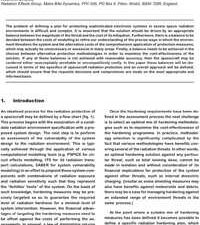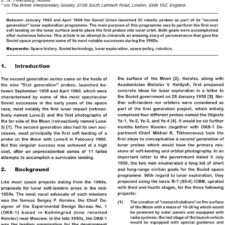In-Situ Missions for the Exploration of Titan’s Lakes
£5.00
J. O. Elliott et al. (2010), JBIS, 63, pp.376-383
Refcode: 2010.63.376
Keywords: Titan, In-situ, Lander, Submersible, RPS
Abstract:
The lakes of Titan represent an increasingly tantalizing target for future exploration. As Cassini continues to reveal more details the lakes appear to offer a particularly rich reservoir of knowledge that could provide insights to Titan’s formation and evolution, as well as an ideal location to explore Titan’s potential for pre-biotic chemistry. A recent study of Titan Lake Probe missions was undertaken as one of several dozen studies commissioned by the National Research Council (NRC) Planetary Decadal Survey to explore the technical readiness, feasibility and affordability of scientifically promising mission scenarios. This in-depth study focused on an in-situ examination of a hydrocarbon lake on the Saturnian moon Titan-a target that presents unique scientific opportunities as well as several unique engineering challenges (e.g., submersion systems and cryogenic sampling) to enable those measurements. Per direction from the NRC Planetary Decadal Survey Satellites Panel, and after an initial trade-space examination, study architectures focused on three possible New Frontiers-class missions and a more ambitious Flagship-class lander intended as the in-situ portion of a larger collaborative mission. Detailed point designs were developed to explore these four potential mission options, including consideration of flight system and mission designs, as well as operations on and under the lake’s surface and scenarios for data return. In this paper we present an overview of the science objectives of the missions, the mission architecture and surface element trades, and the detailed point designs chosen for in-depth analysis.





